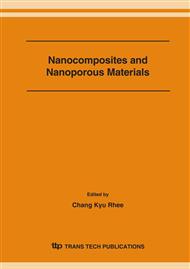p.87
p.91
p.95
p.99
p.103
p.107
p.111
p.115
p.119
Adsorption of Carboxymethylated Polyethyleneimine (CM-PEI) on a Microporous Activated Carbon
Abstract:
We applied a polymer-based surface modification technique to the surface treatment of a microporous activated carbon. We used a new chelating polymer, carboxymethylated polyethyleneimine (CM-PEI), as a functional polymer to modify the carbon surface. In this study, we examined the adsorption phenomena of the CM-PEI on an activated carbon with a nanopore less than 2 nm in diameter and evaluated the adsorption mechanism using three kinds of models; Langmuir, Freundlich, and Redlich-Peterson isotherm. It was found that the adsorption of CM-PEI on the F400 follows the Freundlich isotherm model. Furthermore, desorption experiments of the CM-PEI were carried out to examine the stability of the CM-PEI adsorption on the F400 and to estimate the applicability of the CM-PEI-coated F400 to the adsorbents. It was observed that most of the CM-PEI remains on the F400 for 7 days in the pH range of 3 to 7. Especially, the adsorption amount of CM-PEI on the F400 did not change after 3 days at the pH range of 5 to 7, indicating that the CM-PEI strongly adheres to the F400.
Info:
Periodical:
Pages:
103-106
Citation:
Online since:
January 2007
Authors:
Price:
Сopyright:
© 2007 Trans Tech Publications Ltd. All Rights Reserved
Share:
Citation:


